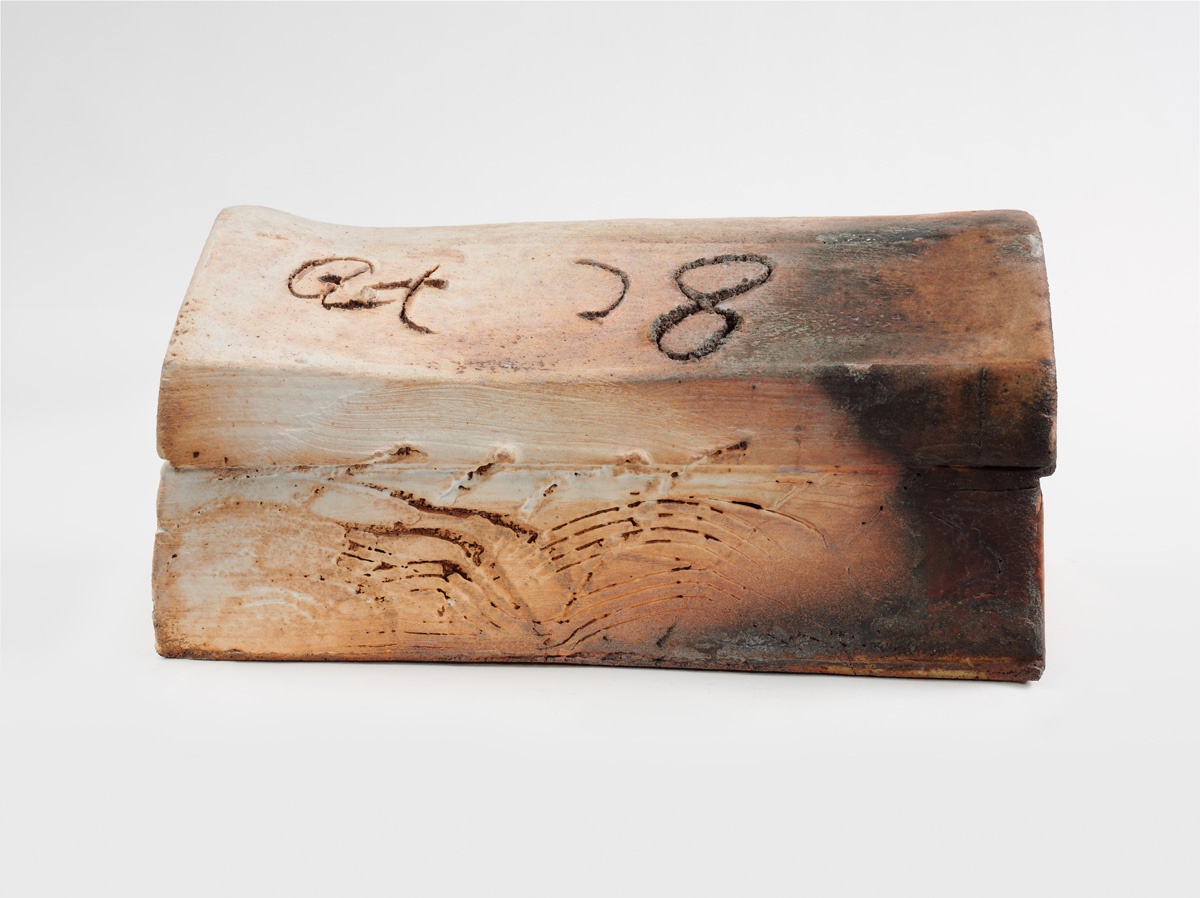’For me any spontaneous gesture, if it expresses something human, even graffiti on a wall, is more valuable than entire museums full of painting which is not related to life’ wrote Antoni Tapies, the recently deceased revolutionary figure of Catalan art. Barely legible, scribbled signs which preserve the spontaneity of touch are recurring motifs in his paintings, drawings and sculptures. The surface of the Gothic Box too is covered with various mysterious incised signs: wavy lines reminiscent of an archaic decorative pattern, and Tapies’s familiar cross motif, which has sacred connotations as well as referring to the artist’s name. On another side is a twisting figure of eight like a Moebius strip, perhaps referring to infinity, invoking the spirit of Zen Buddhism. It is of course an open question whether these signs convey any symbolic meaning, or simply commemorate the act of leaving a mark.The rough surface of the box bears the marks of firing in the kiln, and its patina seems to have formed over millennia. It looks like an archaeological find, and its palimpsest-like surface evokes the ’greyish, blackish, cracked walls’ of Barcelona’s admired Gothic quarter, where, as the artist says, ’the entire history of the country is written’. The ancient walls here belong to an unopenable solid unit hinting at an antique sepulchre or a medieval reliquary; with its invisible interior it addresses the relationship between art and emptiness, a recurrent issue in the work of Tapies.Dávid Fehér
en

